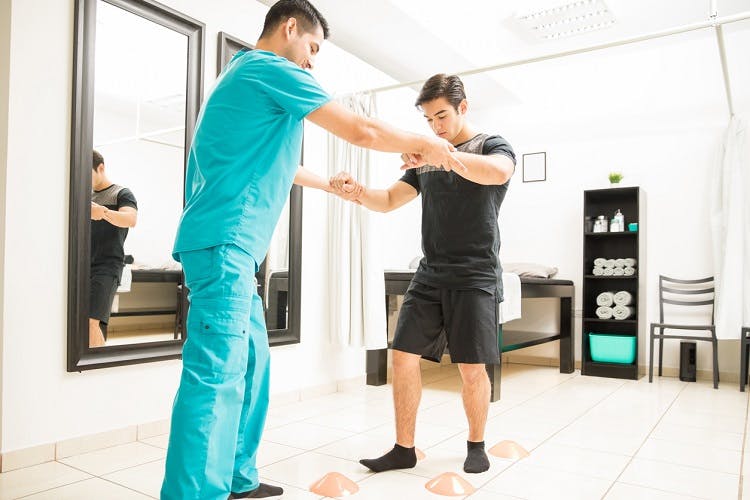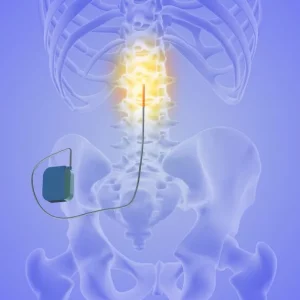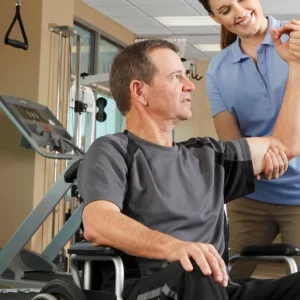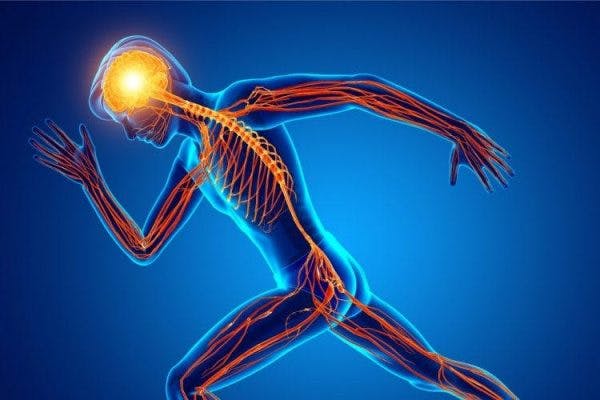Physiotherapy for spinal cord injury rehabilitation focuses on optimizing mobility through exercise.
Because every spinal cord injury is unique, every individual requires a personalized rehabilitation plan.
A physiotherapist will assess one’s functional abilities following a spinal cord injury, create a personalized exercise regimen, and help patients work towards realistic recovery goals.
This article will go over what to expect with physiotherapy for spinal cord injury and why it’s such an essential part of the rehabilitation process.
Why Physiotherapy for Spinal Cord Injury Works
Physiotherapy for spinal cord injury rehabilitation works because it promotes neuroplasticity.
Neuroplasticity refers to an amazing phenomenon in which the brain and spinal cord can recover from injury and regain functions that were affected by injury.
One of the best ways to promote neuroplasticity is through repetitive practice of meaningful activities, which reinforces demand for those specific functions. In turn, the repetitive stimulation promotes neuroadaptive changes in the brain and/or spinal cord.
Physiotherapy contributes to neuroplastic changes after spinal cord injuries by rehabilitating patients’ weakness and functional movements, like sitting or walking.
In rehabilitation, there are no shortcuts or gimmicks. Progress is made by focusing on regaining muscle strength and mobility using the idea of ‘use it to improve it.’
Now that you understand why physiotherapy works, let’s discuss the various exercises it can consist of.
Want 15 pages of SCI recovery exercises in PDF form? Click here to download our free SCI Rehab Exercise ebook now (link opens a pop up for uninterrupted reading)
Physiotherapy Exercises for Spinal Cord Injury
Depending on the location and severity of the spinal cord injury, different physiotherapy exercises may be necessary.
In the following sections, we’ll review 6 different types of physiotherapy exercises that a patient might work on after spinal cord injury.
1. Range of Motion Exercises
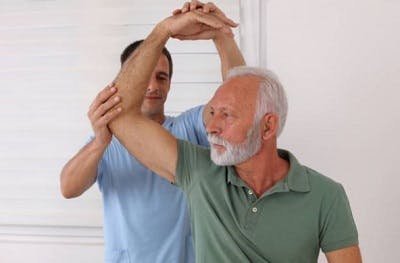
Range of motion (ROM) exercises involve moving the joints through their entire range of motion.
It’s essential to practice ROM exercises to promote circulation and prevent stiff joints.
ROM exercises can be performed passively or actively.
Passive ROM involves having a caregiver or physiotherapist move the patient’s body for them. It can even be performed on patients with complete or severe spinal cord injuries.
In contrast, active ROM exercises are performed by the patient and require effort throughout the motion. If you have enough strength in your limbs, try to perform ROM exercises on your own to stimulate and strengthen neural pathways in the spinal cord.
ROM exercises will also reintroduce movement to the body, which can help reduce pain and stiffness.
Discover passive range of motion exercises »
2. Stretches
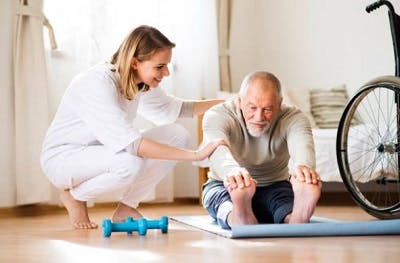
Many patients experience involuntary muscle contractions, known as spasticity, that results from impaired communication between the brain and muscles.
Stretching can help to lengthen painful and tight muscles and reduce pain signals within the joints.
The effects of stretching can last for hours and help prevent injuries during more strenuous exercise.
Well-stretched muscles can bear more weight and effortlessly achieve full range of motion, which makes it easier to perform any exercise.
3. Aerobic Exercises
Aerobic exercise is another important type of exercise for patients after spinal cord injury. This type of physiotherapy gets the heart pumping and boosts circulation.
Strengthening the cardiovascular system through aerobic exercise is especially important after a spinal cord injury that has affected one’s mobility. Weakened cardiac performance can slow one’s pulse and decrease blood pressure. If left unaddressed, major organ systems can start to dysfunction.
Along with strengthening the heart, aerobic exercises also help with weight regulation, which many patients may struggle with due to reduced mobility after spinal cord injury.
The following video will demonstrate some aerobic exercises a spinal cord injury patient might work on during physiotherapy.
4. Strengthening Exercises
A major outcome of spinal cord injury is reduced physical activity due to weakened motor control. This is where strengthening exercises come into play as an essential part of physiotherapy for spinal cord injury patients.
Ultimately, the lack of movement can cause your muscles to weaken and shrink in volume. This is called muscle atrophy. Individuals with muscle atrophy are susceptible to falls, fractures, poor circulation, and decreased metabolic rate.
Therefore, it’s critical to practice strengthening exercises to maintain muscle mass. Maintaining muscle mass will make it easier to perform everyday activities so that individuals can regain independence after SCI.
5. Gait Training
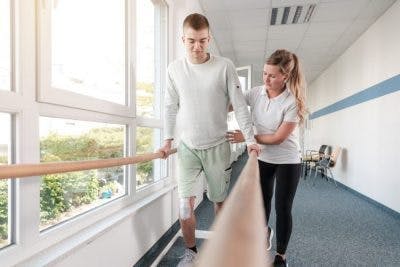
Patients who are further along in their physiotherapy or have mild motor impairments may work on activity-based therapy in SCI rehabilitation.
Gait training is a type of activity-based therapy that focuses on regaining walking skills after a spinal cord injury.
Through the use of walking devices, parallel bars, orthotic devices, harness systems, and technology-assisted robotics, individuals can practice shifting weight, balance skills, and advancing the lower body.
Gait training may also include getting into a pool. The buoyancy of the water will help reduce body weight and tension on the joints so that patients can participate in therapies, even with limited strength.
Activity-based therapies provide a more practical and straightforward approach to spinal cord injury rehabilitation.
6. At-Home Physiotherapy Programs
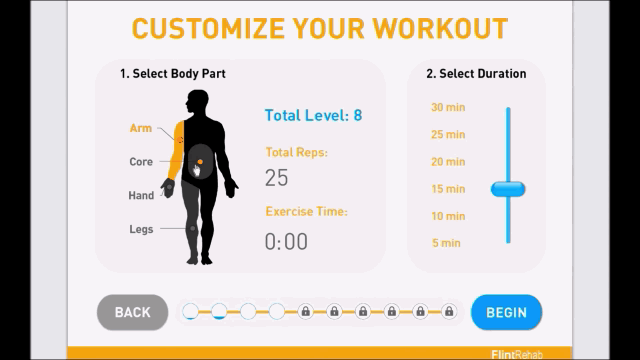
The repetitions performed in a single physiotherapy session are usually not enough to promote neuroadaptive changes. Therefore, it is essential to also practice physiotherapy exercises at home.
Without a physiotherapist present, many individuals struggle with accountability. Performing the same exercises over and over can get boring and cause patients to lose motivation. This is where at-home rehab tools can help.
For example, Flint Rehab’s FitMi is a home rehab device designed to encourage users to practice physiotherapy exercises on a regular basis at home. This helps users perform the repetitions necessary to relearn functions after spinal cord injury.
Physiotherapy for Spinal Cord Injury Rehabilitation: Key Points
Physiotherapy for spinal cord injury rehabilitation can be an extremely effective way to optimize mobility. Licensed professionals guide patients through exercises to recover as much function as possible after SCI.
Ultimately, physiotherapy is effective because it helps stimulate neural pathways in the spinal cord.
We hope this article helped you better understand how physiotherapy can play a significant role in spinal cord injury rehabilitation.
Photos from top to bottom: iStock/Antonio_Diaz/ChesiireCat/Halfpoint/kzenon
